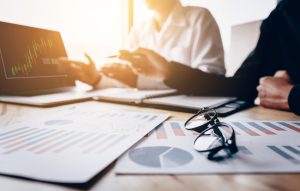How to Read and Understand the Balance Sheet
 Determine the health of a business by analyzing its Balance Sheet
Determine the health of a business by analyzing its Balance Sheet
The balance sheet is a standard financial report that is often included with a business’ financial statements.
It is easy for business owners to understand the profit and loss statement (P&L), which provides business revenues and expenses for a given period. The balance sheet, however, provides a snapshot of a company’s accounts, specifically assets, liabilities and equity, at a given time.
So why is understanding your balance sheet so important?
First, as mentioned above, it includes the company’s assets at a specific point in time (i.e., month-end, year-end, etc.). A classified balance sheet will list the assets by liquidity and show what can and should be converted to cash quickly to pay for liabilities, operating expenses, or to invest in new ventures. Conversely, the non-liquid assets will also be listed and tell readers what the company owns long-term.
The liabilities section of the balance will show any upcoming amounts due in the short-term as well as any long-term balances. Usually, a liability is considered short-term if it is due within 12 months of the balance sheet date.
When reviewing a company’s balance sheet, the reader will review current liabilities as well as the current assets and determine if the company has sufficient current assets to settle short-term liabilities.
If current liabilities exceed current assets, the reader may conclude that the company may not be able to settle current liabilities as they come due.
Long term assets and liabilities
The long-term assets and liabilities also tell a story about the company’s future. Long-term assets such as notes receivable will advise the reader that the company will convert the assets to cash in the future. The long-term liabilities will advise of the future commitments the company has and its ability to settle those future commitments.
Analyzing a company’s balance sheet from one period to another will also provide information regarding the business health. For example, reviewing the trend in accounts receivable from one period to another can identify issues such as slow collections and uncollectible debts.
The equity section of the balance sheet is made up of the initial investment in the company and any accumulated profits or losses retained in the business at the balance sheet date. This balance is what the owners would expect if the company was liquidated. If equity is negative, the company would not have sufficient assets to settle its debts if the assets were liquidated at the balance sheet value.
For the balance sheet to be an effective tool for business owners in analyzing the strengths of their business, it should be kept on the accrual basis. In fact, financial statements prepared on the GAAP basis (Generally Accepted Accounting Principles) are usually accrual basis. An accrual basis balance sheet will include all accounts receivables and accounts payables, thus providing an accurate snap shot of the company’s assets and liabilities at a specific date.
Conversely, cash basis balance sheets will not include the receivables and payables and, if these items are material to the business, the reader will not know what collections are expected in the short-term and what liabilities will need cash in the immediate future.
If you are a small business owner take a moment to review your balance sheet. Understanding how to improve specific account balances can help you grow a financially secure business.
We’ve got your back
At KRS, our CPAs can help you review your balance sheet and put together a plan for improving your company’s financial situation. Give us a call at 201.655.7411 or email me at mrollins@krscpas.com.



